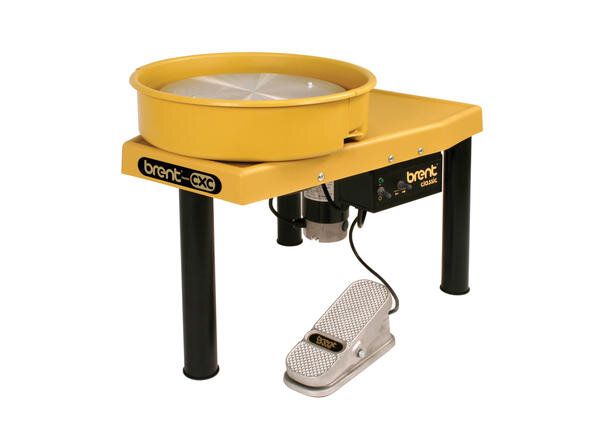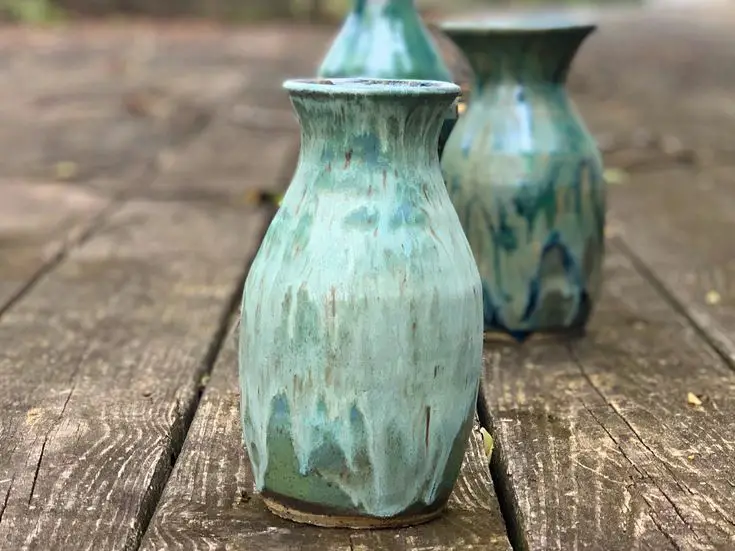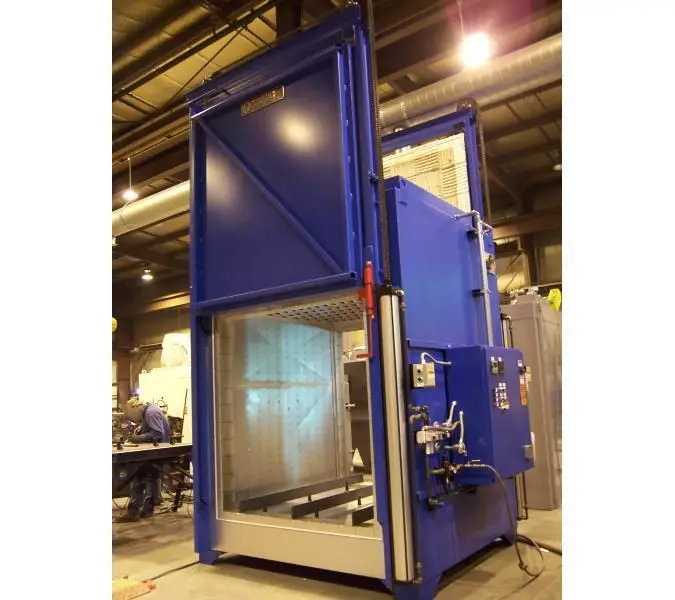How Long Do Brent Pottery Wheels Last?
Brent pottery wheels are one of the most popular and widely used wheels among professional and hobbyist potters. Made by Brent of England, these wheels have earned a reputation for being durable, high-performing, and delivering consistent results over many years of heavy use. However, as with any frequently used piece of equipment, the lifespan of a Brent wheel depends greatly on how it is cared for and maintained.
Well-made pottery wheels like those from Brent can potentially last for decades. But longevity relies heavily on the wheel’s construction and materials, how often it is used, operating conditions and environment, preventative maintenance habits, and whether repairs or upgrades are performed as needed. With frequent throwing and minimal maintenance, these wheels may only last 5-10 years before requiring repairs. But with proper care and infrequent use, they can retain quality performance for 20+ years.
Brent Company History
The Brent brand of pottery wheels was founded in 1969 by Brent Meyers. Based out of Eugene, Oregon, Brent began making wheels after dropping out of college and starting a pottery school in Los Angeles in 1967. With the help of his uncle, Meyers was able to secure a $2,000 loan to start manufacturing pottery wheels, which were sold under the Brent brand name.
From the beginning, Brent wheels were known for their quality and durability. The company found success by focusing on high-end wheels made to withstand years of use. Over the decades, Brent has become one of the most well-known and respected brands among potters and ceramics artists.
Today, Brent wheels are still made in Oregon and continue to have a reputation for longevity and performance. Brent’s commitment to quality has allowed the company to thrive for over 50 years.

Sources:
Brent Wheel Begin Production.indd
Sonoma Stories: Sebastopol arts center has Robert Brent pottery wheels and more
Wheel Construction
Brent pottery wheels are made of cast iron and aluminum for durability. The cast iron wheel head provides stability and helps absorb vibration during throwing, while the aluminum table stays rigid. Ball bearings allow the wheel head to spin smoothly, making throwing easier. The splash pan is removable for easy cleaning.
Brent offers several wheel models in different sizes, with wheel heads ranging from 10-18 inches. The size of the wheel head determines the amount of clay that can be centered at one time. Their largest model, the B-18, has an 18 inch wheel head capable of holding up to 300 pounds of clay. Smaller home studio wheels like the Brent C have 12 inch heads and hold around 150 pounds of clay.
According to a Brent wheel comparison chart, the C model specifications are:Brent Wheel Comparison Chart
Average Lifespan
Brent pottery wheels are known for their longevity and durability. With regular maintenance and care, a Brent wheel can provide many years of reliable service.
For potters who use their Brent wheel frequently as part of a professional studio or classroom environment, the expected lifespan is approximately 10-15 years with regular use. Wheels that see heavy daily use by multiple potters may need to be replaced or refurbished after 5-10 years.
For hobbyist potters who use their Brent wheel less often for personal work, the lifespan can exceed 15-20 years or more. With lighter home studio use, well-maintained Brent wheels can last for decades.
The lifespan depends largely on the level of use and maintenance. Key factors are how often the wheel is used, whether repairs and upgrades are performed as needed, and how well the wheel is cleaned and lubricated on a regular basis.
Maintenance
Proper maintenance is crucial for extending the lifespan of your Brent pottery wheel. As with any mechanical device, regular cleaning and lubrication will keep the wheel running smoothly for years to come.
It’s important to keep the wheel oiled and lubricated. The owner’s manual recommends oiling the wheel head and bandjost once a month with light machine oil. This prevents rust and corrosion while also reducing friction on moving parts. Too much friction can lead to excess wear and tear over time.[1]
Another key maintenance task is cleaning out the splash pan after every use. Clay and water can accumulate in the pan and damage the wheel if left for extended periods. The manual advises emptying the pan contents into a slop bucket after each session. Then use a sponge to wipe down the wheel table, legs, and surrounding floor area.[1]
Proper storage is also essential for longevity when the wheel is not being used. Keep it covered and out of direct sunlight and extreme temperature fluctuations. Storing in a climate-controlled space is ideal. Before storing, clean the wheel thoroughly and ensure moving parts are lubricated.
Following this simple maintenance routine will help keep a Brent wheel running smoothly for decades. With proper care, many potters get 20+ years of reliable service from their Brent wheels.
Repairs
Brent wheels are built to last, but they may eventually need some repairs and maintenance. One of the most common repairs is replacing the ball bearings. The ball bearings allow the wheel head to spin smoothly and quietly. Over time, the bearings can wear down. Replacing them restores the performance of the wheel. According to Brent’s website, ball bearing kits can be purchased for most models to make this repair easier.
Another common repair is touching up paint chips and cracks. The constant motion of spinning clay can lead to paint chipping off over time. This is mostly a cosmetic issue, but painting over chips helps prevent rust. Cracks may also form in the splash pan from wear and tear. These can be welded or filled with auto body filler then sanded and painted.
More intensive repairs may involve welding cracked or broken components like the wheel head. It’s a good idea to consult an experienced pottery equipment repair technician for major repairs. Brent’s website has a locator to help find authorized service centers.
Upgrades
Brent wheels can be upgraded in a few ways to improve their functionality and extend their lifespan. One popular upgrade is installing a larger wheelhead. Brent offers wheelheads up to 18″ in diameter, providing more surface area for throwing larger pieces (source: https://www.clay-king.com/pottery_wheels/brent_pottery_wheels/brent_wheel_accessories.html).
Another common upgrade is replacing the standard motor with a higher powered one. More powerful motors provide more torque and allow the wheel to spin heavier loads without slowing down (source: https://www.aardvarkclay.com/products.php?cat=72). Digital speed controls can also be added to allow for finer adjustments to the wheel speed.
Buying Used
When looking into purchasing a used Brent wheel, it’s important to thoroughly inspect the condition before making a purchase. Brent wheels can last for decades if properly maintained, so even an older used model may still have plenty of life left if it was well cared for.
Be sure to ask the seller about the wheel’s history and how much usage it has seen. High-volume studio wheels may show more wear than those used lightly by hobbyists. Look for any cracks, chips, or repairs in the metal framework, and test that the wheel head turns smoothly without wobbling. Spin it at both low and high speeds to check for any concerning vibrations or noises.
Also factor in any repairs or upgrades you may need to make after purchasing it used. Things like belt replacements, motor servicing, rust removal or new accessories can add to the overall cost. Consider the repair costs when negotiating the asking price if issues are found during inspection.
With some diligence and mechanical aptitude, used Brent wheels can be restored to like-new performance at a fraction of the cost of buying new. Just be sure to carefully vet condition and maintenance history beforehand.
Alternatives
While Brent is considered one of the top brands for pottery wheels, there are other quality options to consider as alternatives. Some key brands to look at include:
Shimpo – Known for their whisper quiet motors and smooth running wheels. Models like the Shimpo VL Whisper are direct competitors to Brent wheels.
For those on a budget or just starting out, beginner level wheels can be a good affordable option before investing in a more heavy-duty professional wheel. Brands like Skutt and Shimpo offer quality starter wheels.
For the DIY inclined, it is possible to build your own pottery wheel. While challenging, this allows total customization and cost savings. Resources are available online for wheel designs and building instructions.
Conclusion
In summary, Brent pottery wheels are known for their exceptional durability and longevity. With proper construction using quality materials, precision engineering, and robust design, Brent wheels can easily last for decades with proper care and maintenance.
The average lifespan of a Brent wheel is 20-30 years, but they can last even longer if well maintained. By following Brent’s instructions for regular service and cleaning, replacing parts as needed, and avoiding damage, you can get the maximum lifespan out of your Brent wheel.
While no wheel lasts forever, Brent’s reputation for quality and durability is well-earned. Their pottery wheels represent an investment that should provide many years of reliable use for any ceramic artist. With some basic care and maintenance, your Brent wheel can remain a functional, long-lasting studio staple.



